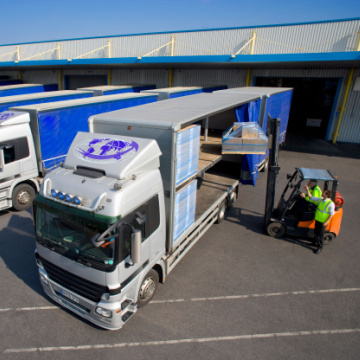Commercial vehicle drivers are always at a significantly higher risk of getting involved in accidents. This often results because larger vehicles and trucks find it more difficult to accomplish intricate manoeuvres. Also, the larger sizes of these vehicles make it very difficult for the drivers to assess oncoming dangers by looking around. More and more professional fleets are now making use of advanced technology tools to enhance diver safety. Collision avoidance systems are extremely effective in helping drivers avoid collisions with other vehicles as well as stationary objects. More and more factories, warehouses, shipyards, mines, and construction sites now understand the importance of using these tools.
How do they Work?
Collision avoidance systems typically make use of cameras, laser sensors, and radar sensors to detect the presence of any object in its close vicinity. As soon as the drivers are at risk of a collision, they are alerted by these technologies so that they can avoid an imminent crash by applying brakes or correcting their course. The drivers are also warned when they drive dangerously close to other vehicles or go over the speed limit.
Cameras are used by anti-collision systems for image recognition. On the other hand, the proximity of other objects is determined by a radar or laser. GPS sensors may also be added for the detection of fixed objects that are not visible to the drivers.
Avoiding Collision between Forklifts
Collision avoidance systems use high-precision UWB technology to provide location awareness to forklifts. These systems have predetermined proximity thresholds integrated into forklifts. It is possible to set the thresholds by stopping or slowing the forklift down. Audible and visual signals are used in collision avoidance systems to provide information to the operators so that they can detect other forklifts near them.
Avoiding Collision between Forklifts and Pedestrians
The collision avoidance systems make use of wearable tags powered by UWB technology to improve safety between forklifts and pedestrians. These systems warn pedestrians when they cross predetermined thresholds with visual and audible signals. Most importantly, they help forklifts and pedestrians notice each other in blind spots. In case pedestrians fail to detect visual and audible signals, vibrations are sent via wearable equipment. Visually or hearing-impaired employees can also benefit significantly from collision avoidance systems. Such wearable equipment is available nowadays in the form of cards worn with lanyards, badges, or watches.
Benefits of Collision Avoidance System
Factory or warehouse environments, in general, are full of intersections, sharp bends, areas with hazardous materials, and narrow corridors. Therefore, ensuring a secure working environment for all can be quite challenging for these workplaces. Collision avoidance systems are considered to be the most effective way for them to create a safe work environment.
- Significant reduction of accident risk in busy areas, narrow paths, and blind spots.
- Ensuring safety for forklifts and pedestrians with 360-degree proximity sensing support.
- Integration of wearable equipment and devices into forklifts to protect workers.
- Helps build a real-time tracking system for forklifts.
- Systems equipped with video recording feature can provide a relevant layer of context in case of a driving incident.
At ShockWatch, we offer a wide spectrum of sophisticated collision avoidance systems that can be used across industries. Please contact our experts today to find out more.


